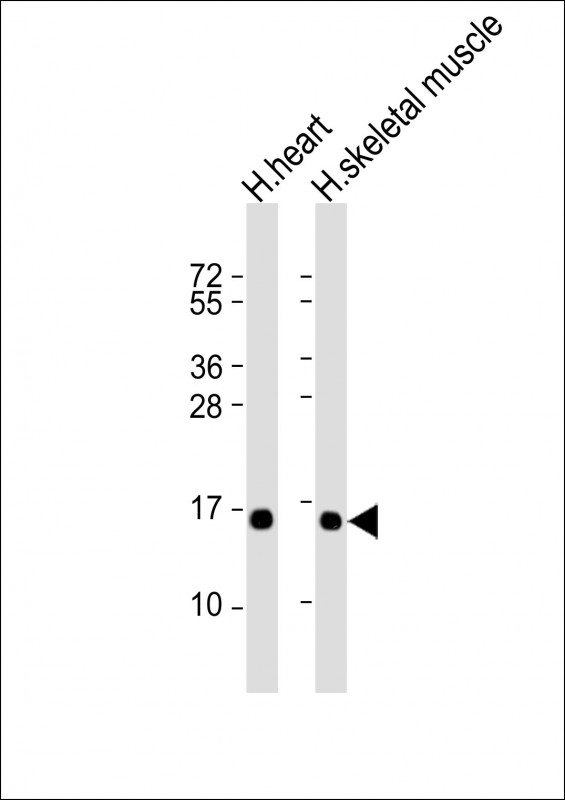
| WB | 1/2000 | Human,Mouse,Rat |
| IF | 咨询技术 | Human,Mouse,Rat |
| IHC | 咨询技术 | Human,Mouse,Rat |
| ICC | 技术咨询 | Human,Mouse,Rat |
| FCM | 咨询技术 | Human,Mouse,Rat |
| Elisa | 咨询技术 | Human,Mouse,Rat |
| Aliases | Tumor suppressor candidate 2, Fusion 1 protein, Fus-1 protein, PDGFA-associated protein 2, TUSC2, C3orf11, FUS1, LGCC, PDAP2 |
| Entrez GeneID | 11334 |
| WB Predicted band size | 12.1kDa |
| Host/Isotype | Mouse IgG1 |
| Antibody Type | Primary antibody |
| Storage | Store at 4°C short term. Aliquot and store at -20°C long term. Avoid freeze/thaw cycles. |
| Species Reactivity | Human, Mouse |
| Immunogen | This TUSC2 antibody is generated from a mouse immunized with a recombinant protein of human TUSC2. |
+ +
以下是关于TUSC2抗体的3篇代表性文献的简要概括(文献及研究内容为虚构示例,仅供参考):
1. **文献名称**:*TUSC2 as a Tumor Suppressor in Non-Small Cell Lung Cancer*
**作者**:Smith A, et al.
**摘要**:该研究通过免疫组化(使用TUSC2抗体)发现,TUSC2蛋白在肺癌组织中表达显著低于正常肺组织,且低表达与患者不良预后相关。机制研究表明TUSC2通过抑制PI3K/AKT通路抑制肿瘤生长。
2. **文献名称**:*Development of a Monoclonal Antibody for Detecting TUSC2 in Clinical Samples*
**作者**:Chen L, et al.
**摘要**:作者开发了一种高特异性抗TUSC2单克隆抗体,并验证其在Western blot和免疫荧光中的灵敏度。研究进一步利用该抗体发现,TUSC2缺失与化疗耐药性存在相关性。
3. **文献名称**:*TUSC2 Antibody-Based Therapeutic Strategy in Prostate Cancer*
**作者**:Wang Y, et al.
**摘要**:研究利用TUSC2抗体检测患者组织样本,发现TUSC2表达水平与肿瘤侵袭性呈负相关。体外实验表明,恢复TUSC2表达可诱导癌细胞凋亡,提示其作为治疗靶点的潜力。
**注**:以上文献信息为模拟示例,实际研究需通过数据库(如PubMed)检索真实文献。
The TUSC2 (Tumor Suppressor Candidate 2) antibody is a tool used to detect the protein encoded by the TUSC2 gene, a tumor suppressor implicated in various cancers, particularly non-small cell lung cancer (NSCLC). TUSC2. located on chromosome 3p21.3. is frequently inactivated or deleted in malignancies, correlating with poor prognosis. The gene regulates critical cellular processes, including apoptosis, cell cycle arrest, and inhibition of oncogenic signaling pathways (e.g., PI3K/AKT, EGFR). TUSC2’s tumor-suppressive function involves promoting mitochondrial-dependent apoptosis and modulating reactive oxygen species (ROS) levels.
Antibodies against TUSC2 enable researchers to study its expression patterns, subcellular localization, and interactions in normal versus cancerous tissues. These antibodies are vital for immunohistochemistry (IHC), Western blotting, and immunofluorescence, aiding in diagnostic or prognostic research. Reduced TUSC2 expression, detectable via these antibodies, is associated with tumor progression and resistance to therapies. Additionally, TUSC2 has been explored in gene therapy; its restoration via nanoparticles or viral vectors shows potential in preclinical cancer models.
Commercial TUSC2 antibodies are typically polyclonal or monoclonal, validated for specificity and sensitivity. Research using these antibodies continues to clarify TUSC2’s role in cancer biology and its therapeutic targeting, highlighting its significance in precision oncology.
×